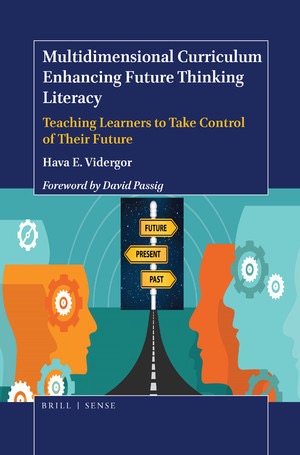transdisciplinary
Select an item by clicking its checkbox
Reviewed by: Alicia Brienza, Stonehill College
Date Reviewed: June 16, 2021
Date Reviewed: June 16, 2021
This book presents an innovative Multidimensional Curriculum Model (MdCM) that develops future thinking literacy among all ages and levels of school students. It combines theory and practice and is highly applicable for policy makers, curriculum coordinators, lecturers at colleges of education, graduate students, and teachers, who are challenged daily to provide meaningful and up-to-date learning. It will aid teachers to prepare learners for the fast-changing world and equip them with ...
This book presents an innovative Multidimensional Curriculum Model (MdCM) that develops future thinking literacy among all ages and levels of school students. It combines theory and practice and is highly applicable for policy makers, curriculum coordinators, lecturers at colleges of education, graduate students, and teachers, who are challenged daily to provide meaningful and up-to-date learning. It will aid teachers to prepare learners for the fast-changing world and equip them with skills that will help them control their futures.
It combines latest teaching strategies of transdisciplinarity, phenomenon-based, project based, and problem-based learning, in a unique manner so as to develop 21st century skills. More specifically, it aims at developing higher order thinking skills and processes referred to as scientific, creative, and future thinking. It covers core and non-core-curriculum domains, multi and transdisciplinary teaching, as well as designing curricula for the gifted, the able and students at risk. It applies the latest theories on constructivism and carefully selected tools authentically and relevantly to create interest and challenge, addressing learning from personal, global, and time perspectives.
Each chapter highlights a strategy or thinking tool, commencing with theory, followed by a unit description and lesson plans. The chapters each end with a final product named the future scenario. This scenario, written by students projecting themselves into the future, is based on accumulated knowledge, summarizes their learning, and illustrates future thinking literacy.
It combines latest teaching strategies of transdisciplinarity, phenomenon-based, project based, and problem-based learning, in a unique manner so as to develop 21st century skills. More specifically, it aims at developing higher order thinking skills and processes referred to as scientific, creative, and future thinking. It covers core and non-core-curriculum domains, multi and transdisciplinary teaching, as well as designing curricula for the gifted, the able and students at risk. It applies the latest theories on constructivism and carefully selected tools authentically and relevantly to create interest and challenge, addressing learning from personal, global, and time perspectives.
Each chapter highlights a strategy or thinking tool, commencing with theory, followed by a unit description and lesson plans. The chapters each end with a final product named the future scenario. This scenario, written by students projecting themselves into the future, is based on accumulated knowledge, summarizes their learning, and illustrates future thinking literacy.
